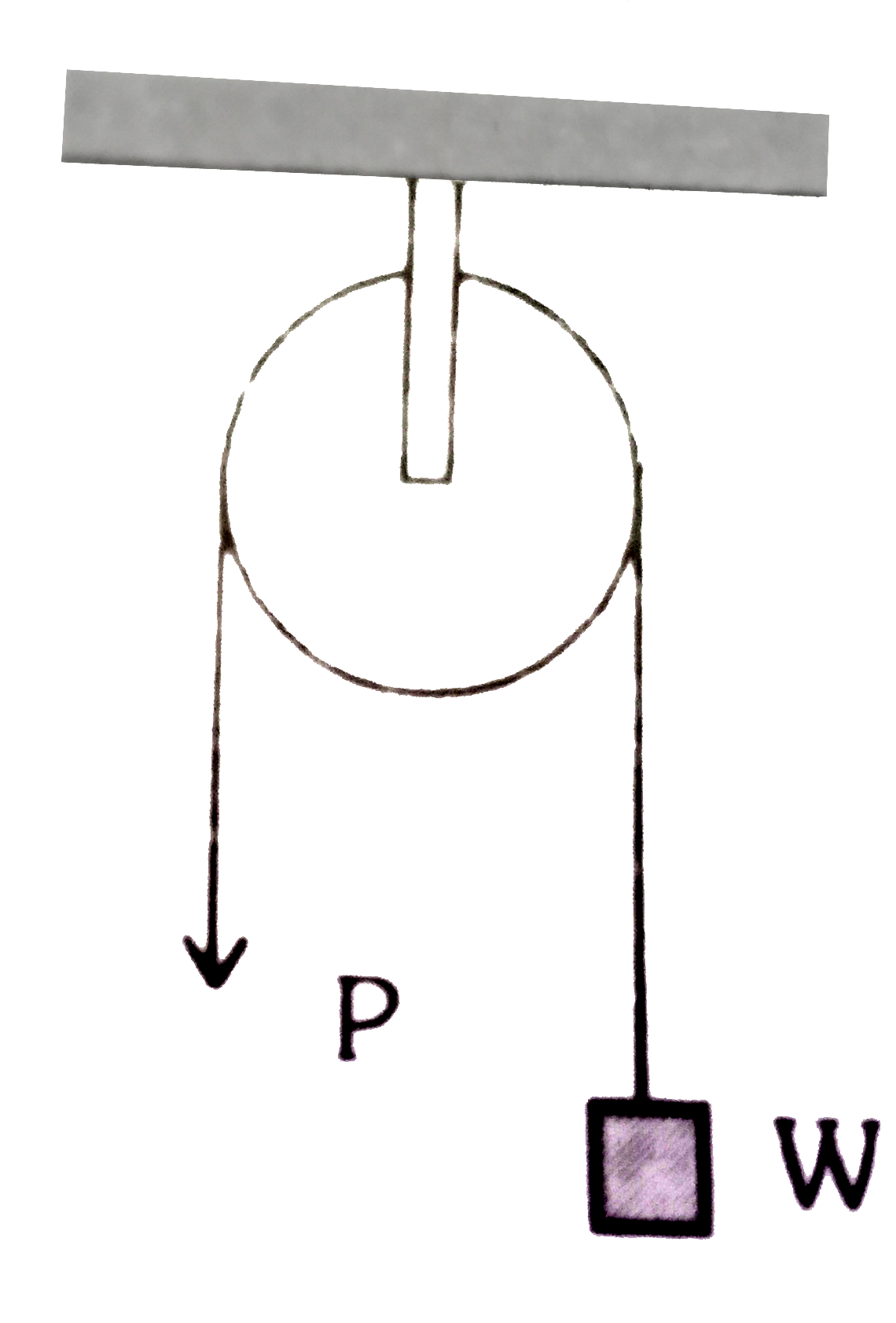The pulleys A and C are fixed while the pulley B is movable . A mass M2 is attached to pulley B , while the string has masses M1and M3 at the two ends . Find the acceleration of each mass .
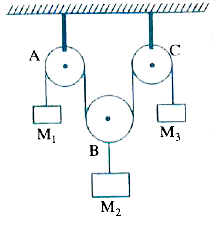
The force acting on masses M1,M2and M3 are shown in figure .
Let a1anda3 be upward acceleration of masses M1andM3anda2
the downward acceleration of mass M2.
For motion of mass M_(1)
T−M1g=M1a1 ....(1)
For motion of mass M3
T−M3g=M3a3 ....(2)
For motion of mass M2
M2g−2T=M2a2 ....(3)
Let l1,l2,l3 be the lengths of vertical portions of the string between pulley at any instant . M1 goes up through x2M2 goes down through y and M3 goes up through z.
Then l1+2l2+l3=(l1−x)+2(l2+y)+l3−z
⇒x+z=2y⇒d2xdt2+d2zdt2=2d2ydt2
a1+a3=2a2⇒a2=a1+a32 ....(4)
From (1), a_(1)=T/M_(3)-g....(5)<br>From(2), a_(3)=T/M_(3)-g....(6)<br>⊂stitut∈ga_(1) "and" a_(3)∈(4),we≥t<br>a_(2)=T/2(1/M_(1)+1/M_(3))-g....(7)<br>From(3),T=(m_(2)(g-a_(2))/2....(8)<br>⊂stitut∈gthisvalue∈(7),we≥t<br>a_(2)=M_(2)/4 (g-a_(2))(1/M_(1)+1/M_(3))-g "or" a_(2)=(M_(2)(g-a_(2))(M_(3)+M_(1)))/(4M_(1)M_(3))-g<br>or4M_(1)M_(3)a_(2)-M_(2)(M_(1)+M_(3))g-M_(2)(M_(1)+M_(3)a_(2)-4M_(1)M_(3)g<br>or[4M_(1)M_(3)+M_(2)(M_(1)+M_(3))]a_(2)=(M_(1)+M_(3))M_(2)g-4M_(1)M_(3)g<br>a_(2)=((M_(1)+M_(3))M_(2)g-4M_(1)M_(3)g)/(4M_(1)M_(3)+M_(2)(M_(1)+M_(3))) a_(2)=(M_(1)M_(2)+M_(2)M_(3)-4M_(1)M_(3))/(M_(1)M_(2)+M_(2)M_(3)+4M_(1)M_(3)) ....(9)
Substituting value of a2 in above equation , we get
a1=−M1M2+3M2M3−4M1M3M1M2+M2M3+4M1M3g ....(10)
similarly from (6)and (9)
a3=3M1M2−M2M3−4M1M3M1M2+M2M3−4M1M3 ....(11)
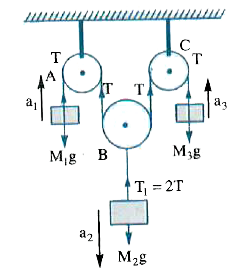
Similar Questions
Knowledge Check
If the string & all the pulleys are ideal, acceleration of mass m is :-
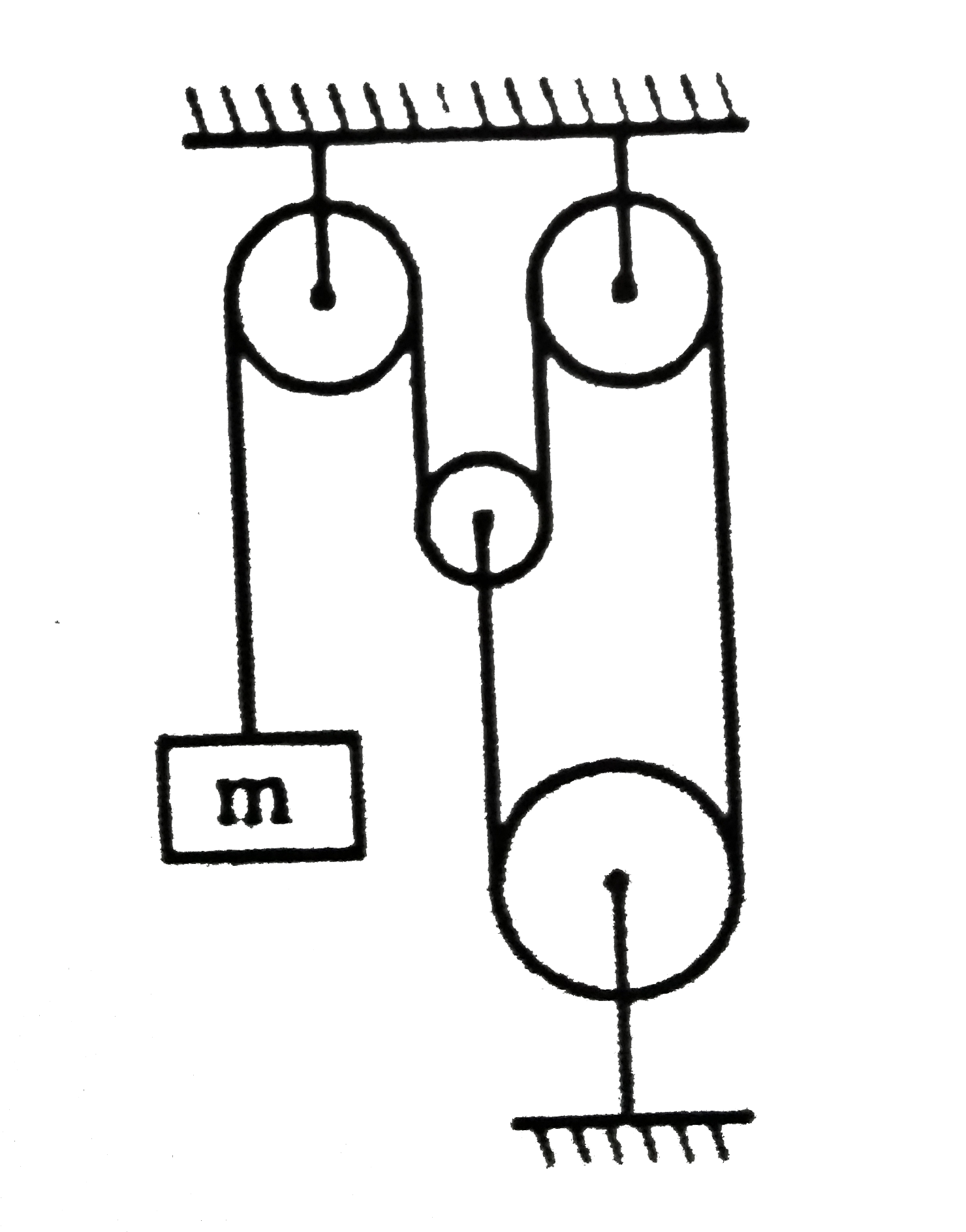 Ag2B0CgDdependent on m
Ag2B0CgDdependent on mTwo masses 2 kg and 3 kg are attached to the end of the string passed over a pulley fixed at the top. The tension and acceleration are
A7g8,g8B21g8,g8C21g8,g5D12g5,g5
In the system shown in the figure all surfaces are smooth, pulley and string are massless. The string between the two pulleys and between pulley and block of mass 5 m is parallel to the incline surface of the block of mass 4 m. The system is released from rest. Find the acceleration of the block of mass 4 m . [tan37∘=34]
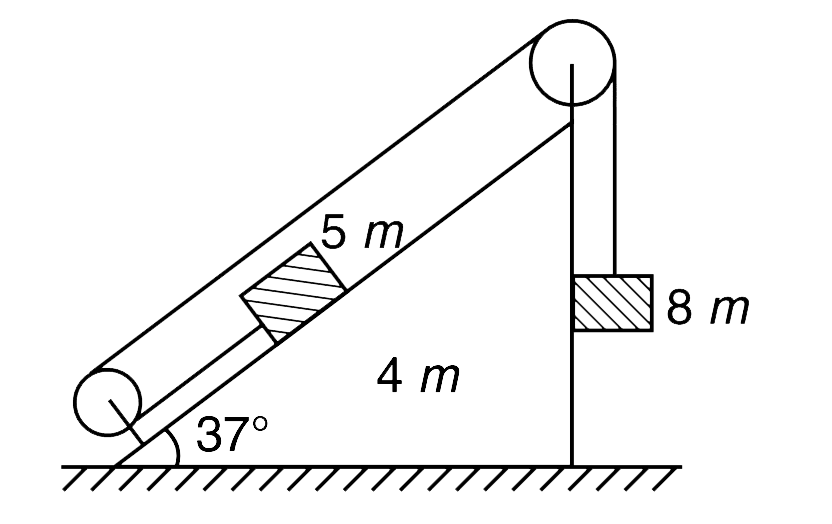
View SolutionFigure shows two blocks of mass m and m connected by a string passing over a pulley. The horizontal table over which the mass m slides is smooth. The pulley (uniform disc) has mass m and it can freely rotate about this axis. Find the acceleration of the mass m assuming that the string does not slip on the pulley.
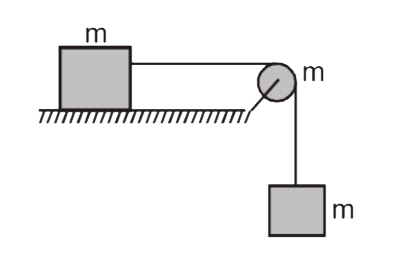
View SolutionA pulley fixed to the ceiling carries a thread with bodies of masses m1 and m2 attached at its ends. The masses of the pulley and thread are negligible, friction is absent. Find the acceleration of the centre of mass(acm) of this system.
View SolutionA pulley fixed to the ceiling carried a thread with bodies of masses m1 and m2 attached to its ends. The mases of the pulley and the thread are negligible and friction is absent. Find the acceleration of the centre of mass of this system.
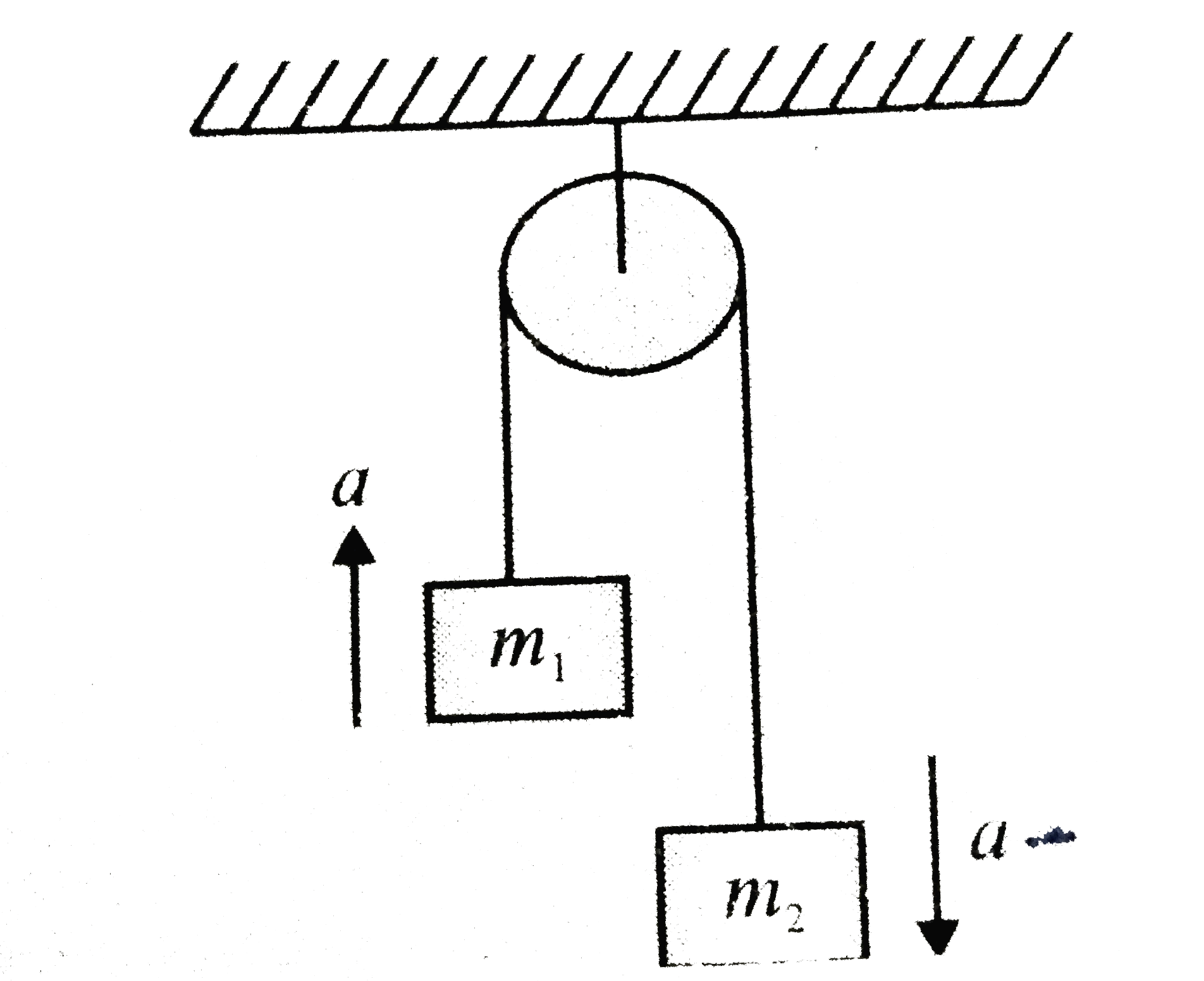
View SolutionA pulley fixed to the ceiling carried a thread with bodies of masses m1 and m2 attached to its ends. The mases of the pulley and the thread are negligible and friction is absent. Find the acceleration of the centre of mass of this system.

View SolutionA smooth pulley A of mass M0 is lying on a frictionless table. A massless rope passes round the pulley and has masses M1 and M2 tied to its ends, the two portions of the string being perpendicular to the edge of the table so that the masses hang vertically. Find the acceleration of the pulley.
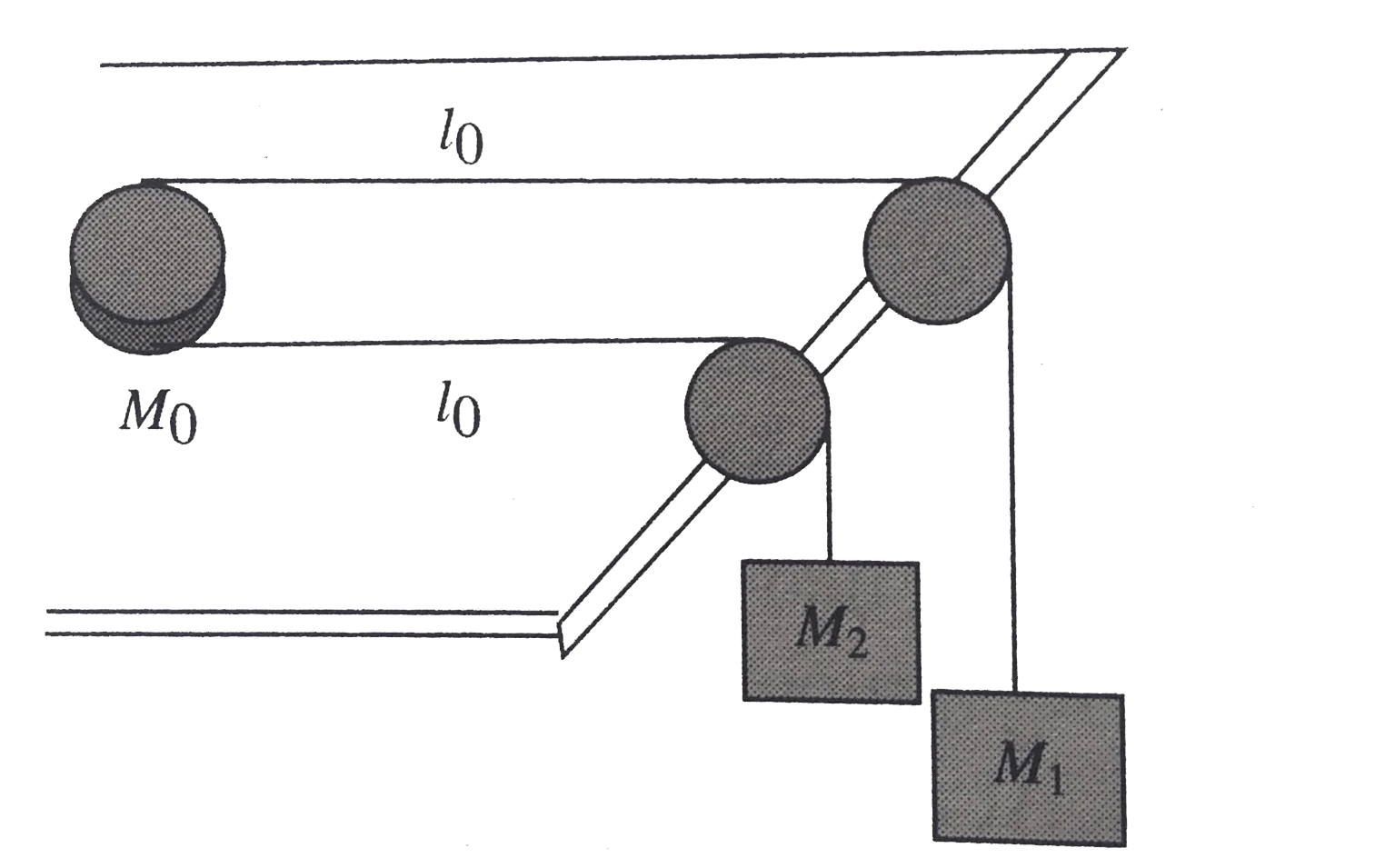
View Solution

